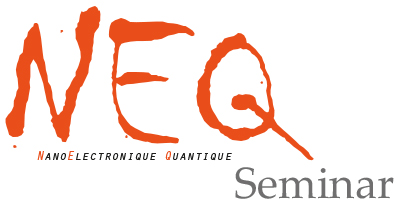- Accueil
- Institut Néel
- Équipes de recherche
- Pôles & Services techniques
- Travailler à l’institut
- Partenariats
- Actualités
- Agenda
- Annuaire

Zoom link : https://univ-grenoble-alpes-fr.zoom.us/j/96994398211?pwd=WDd2dkcxaWZKRHZFUGsvWTVHS0VtUT09
Meeting ID: 918 0890 1596
Passcode: neq2pm!
Title: « Fractional statistics of anyons in a mesoscopic collider »
Abstract:
